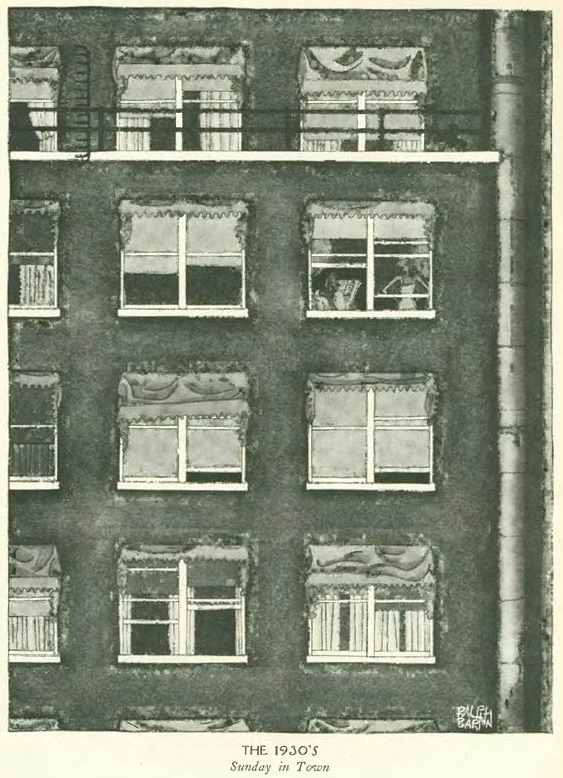Whether probing the battle of sexes or exposing the secret lives of daydreamers like Walter Mitty, James Thurber (pictured above) had a knack for revealing the frustrations and various tics that plagued ordinary people.

That included the fictional John Monroe, whom Thurber placed in various awkward situations in a series of humorous stories, including this encounter with some moving men that required the rather inept Monroe to make a series of decisions usually left to his wife, Ellen. Some excerpts from the Aug. 9 issue:


* * *
Beats the Heat
In the hot August of 1930, film critic John Mosher probably found the air-conditioned theaters to be the best feature of the cinema, given the generally mediocre quality of the summer movies. Mosher also noted the new trend of adapting Broadway plays to the screen, a practice that continues to this day.

* * *
From Our Advertisers
Well, who doesn’t love a whole chicken in jar, ready to “fry or cream” in just 20 minutes? This was actually a big deal in 1930, given that chicken dinners were not as common back in the days before factory farms and Chick-fil-A…
…the makers of Marlboro cigarettes abandoned their essay and penmanship contests and took another direction with their drab, back-page ads, appealing to a vague sense of status in the prospective smoker…
…this sad little bottom-of-the-page ad enticed readers to take a drive in the country to see Texas Guinan and her “Famous Gang” still whooping it up like it was 1925. The venture was short-lived…
…on to our cartoons, Peter Arno looked in on nightlife in the city…
…William Crawford Galbraith took in an outdoor concert…
…Ralph Barton offered his comic skills to a glimpse of domestic life…
…Garrett Price observed some boaters on an outing that would be frowned upon today (or at least I hope so)…
…and Constantin Alajalov examined the pitfalls of modern art…
* * *
Speaking of art, we move on the Aug. 16, 1930 issue…

…in which Robert Benchley has fun with the foibles of the art world…
* * *
Rough Riders
In his “Reporter at Large” column, Morris Markey looked in on the working world of one chain-smoking ambulance driver…some excerpts…

* * *
From Our Advertisers
Hard to believe that zippers were a novel invention just 90 years ago…in this ad from the leading manufacturer, Talon, this “hookless” wonder was still referred to as a “slide fastener”…
…the Chrysler Corporation was never the biggest car company in America, but it was always known as a leader in both technology and design, as in these graceful lines that flowed over its new “Straight Eight” models…
…the makers of Camel cigarettes continued to push their product as a sound way to stay fit and trim…
…in the cartoons for Aug. 16, this drawing by Peter Arno appeared for the fifth time in the magazine, always with a different caption (the others appeared in three consecutive issues — June 5, 12 and 19, and on Aug. 2, 1930)…
…William Crawford Galbraith detected some wet vs. dry tension at the country club…
…Ralph Barton returned with another full-page illustration of a weekend domestic scene…
…Garrett Price found confusion in a lengthy queue…
…and Kemp Starrett gave us a bird’s eye view of a future New Yorker…
Next Time: Hell’s Angels…









































